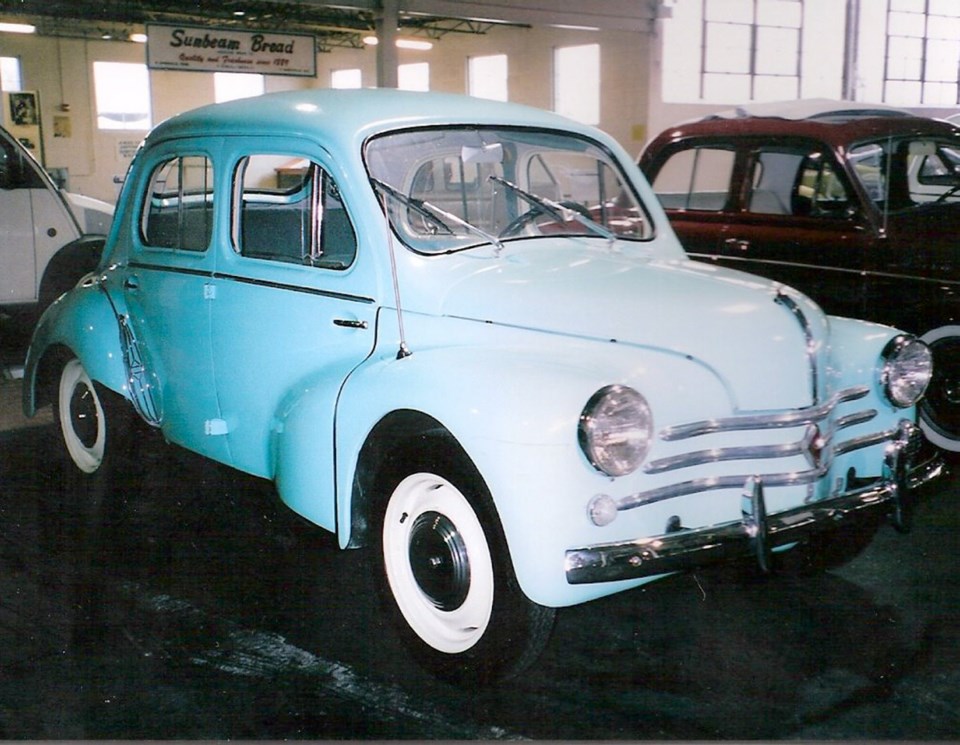Following the Second World War, a few European countries started exporting cars to North America to earn precious dollars. They began landing in the late 1940s, mostly from England and France. Others soon followed.
The earliest French arrival was Renault, a well-established French manufacturer that had built cars since 1898. Although some large Renaults were sold in the United States early in the 20th century, and some were even bodied by American coachbuilders, it was virtually forgotten in North America. The car that started to change that was the diminutive 4CV (four taxable horsepower), also known as the “Regie.”
Although forbidden by their German occupiers, the French had been secretly designing the 4CV since 1941. Volkswagen designer Ferdinand Porsche is said to have provided technical advice after the war when incarcerated in a French prison on war-crimes charges. Louis Renault, also imprisoned as a Nazi collaborator, had died in prison.
Louis Renault had been influenced by Ferdinand Porsche’s rear-engine Volkswagen design, so engineers mounted the 4CV’s four-cylinder overhead-valve engine longitudinally behind the rear axle. Initially 760 cc, it was decreased a few years later to 747 to qualify for the 750-cc racing class.
4CV prototype testing began in 1946, and it was introduced at the Paris Auto Show in October 1947. It began arriving in North America in 1949, a tiny unit-construction four-door sedan (a convertible was also offered) with rear-hinged “suicide-style” front doors.
Power went to the rear wheels through a three-speed manual transmission with floor-mounted shift lever. Its four-wheel independent coil-spring suspension had swing axles at the rear. Hydraulic brakes were fitted and steering was by rack-and-pinion. Instead of the 12-volt electrical system of English cars, the 4CV had six volts.
Unlike the air-cooled Volkswagen, the 4CV’s engine was water-cooled with cooling air entering through small slots just ahead of the rear fenders and louvres on the engine cover. The external radiator cap was just below the rear window, and the 26.5-litre fuel tank’s filler was under the engine cover.
Rear engines were quite a novelty in North America. The Volkswagen had not yet arrived in any numbers in the U.S., and not in sa���ʴ�ý at all, and rear engines brought back memories of the revolutionary but ill-fated Tucker.
Little attention seemed to be paid to weight distribution or oversteer back then, and while the rear weight bias could be tricky to drive, it gave the Renault good traction in snow. It would take the German Volkswagen to really legitimize rear engines in the minds of drivers, to the extent that even General Motors used it in the Chevrolet Corvair compact.
Although the 4CV had four doors, it was a snug little cabin because its 2,108-millimetre wheelbase and 3,607-mm overall length didn’t allow much interior accommodation. Trunk space was under the short front hood.
When Tom McCahill of Mechanix Illustrated tested a 4CV in February 1952, the biggest complaint from the six-foot-one McCahill was the lack of room, “just too small for any comfort if you happen to be one olive pit above average size.” One specific complaint was the limited front foot room caused by wheel-well intrusion.
McCahill reported modest performance from the 23-horsepower engine, up from the earlier 4CV’s 19. He said was “just short of enough moxie to yank a greased duck out of Joe’s mouth” (Joe was McCahill’s Labrador retriever). The 544-kilogram convertible accelerated to 199 km/h in 38 seconds and reached a top speed of 105 km/h.
This performance was slow, but comparable with the English Morris Minor and Volkswagen. Fuel economy was the biggest attraction, with up to 50 miles per gallon achievable.
The 4CV was joined by the Dauphine model in 1956, based on 4CV mechanicals. While still small by North America standards, it was more suitable for North American tastes and driving. The very attractive little sedan had modern, full envelope-type styling and an enlarged 845-cc, 30-horsepower engine that gave it better performance.
The Renault 4CV was continued in production until 1961, by which time a million had been made, the first French car to achieve this. Some were also assembled in England and Japan.
It had been a popular car in Europe, particularly France, where it was a favourite. Its small size made it only marginally suitable for North American motoring.
The 4CV was a handy, economical little runabout for average-sized people to commute or run errands. Although it re-introduced the Renault name to North America, it didn’t achieve anything like the popularity of the German Volkswagen.



